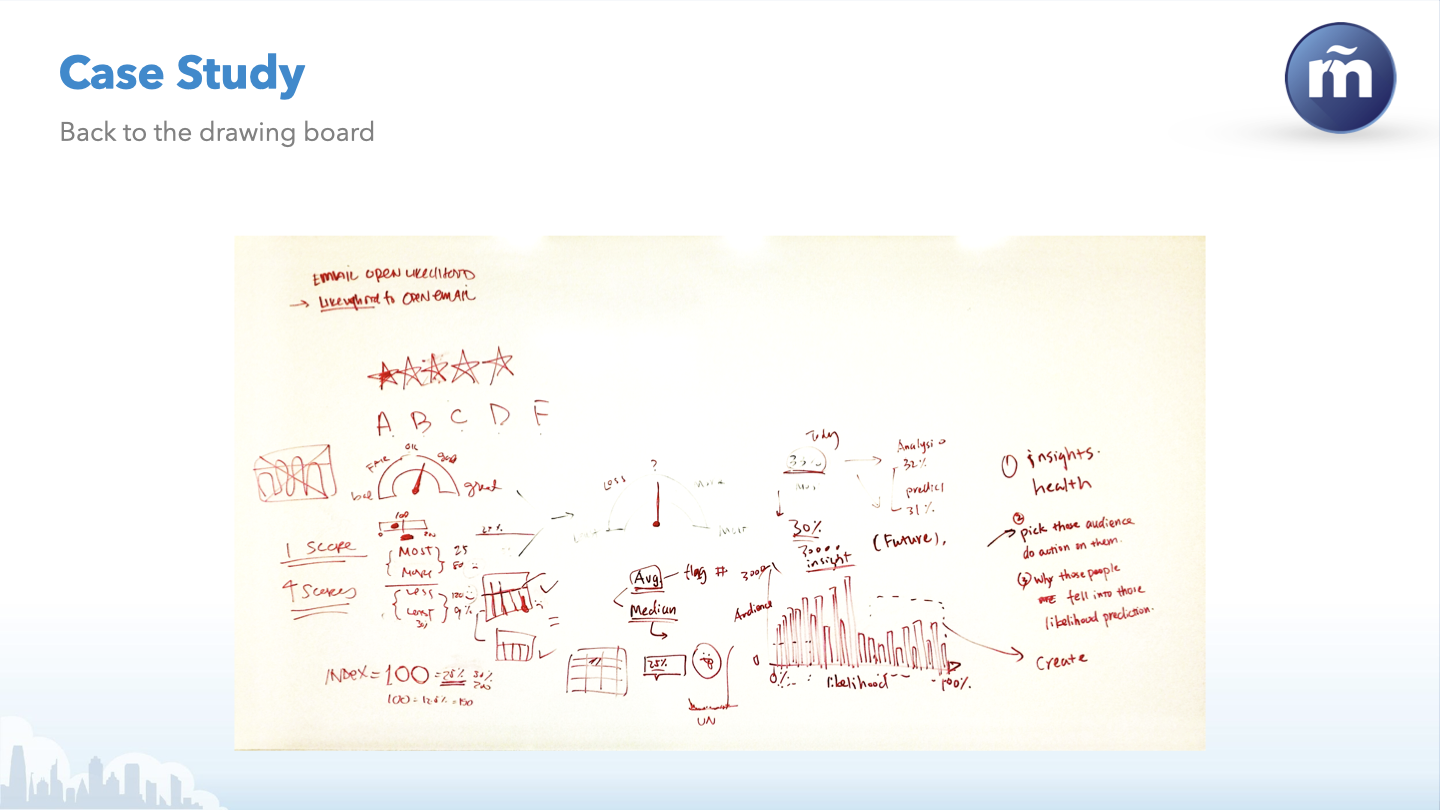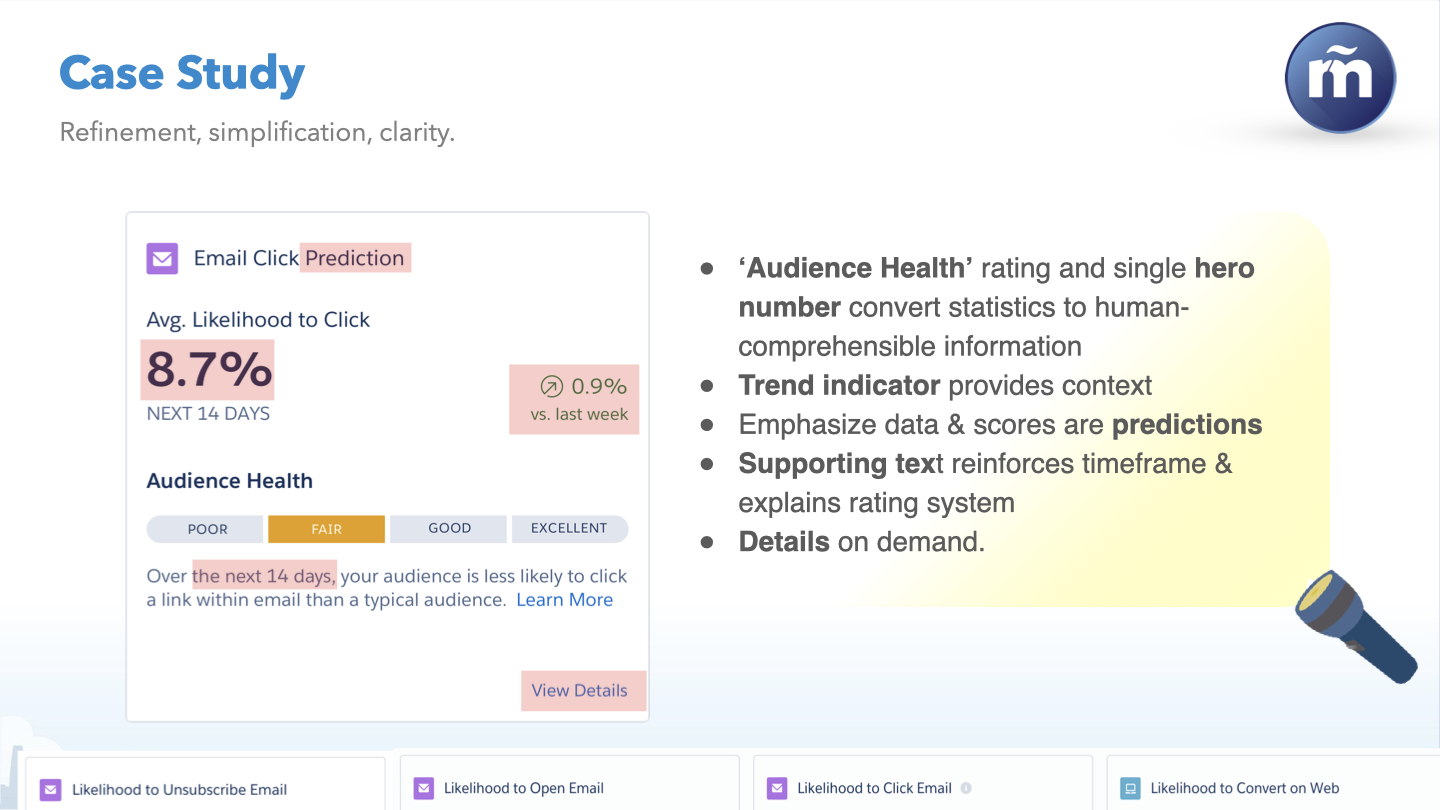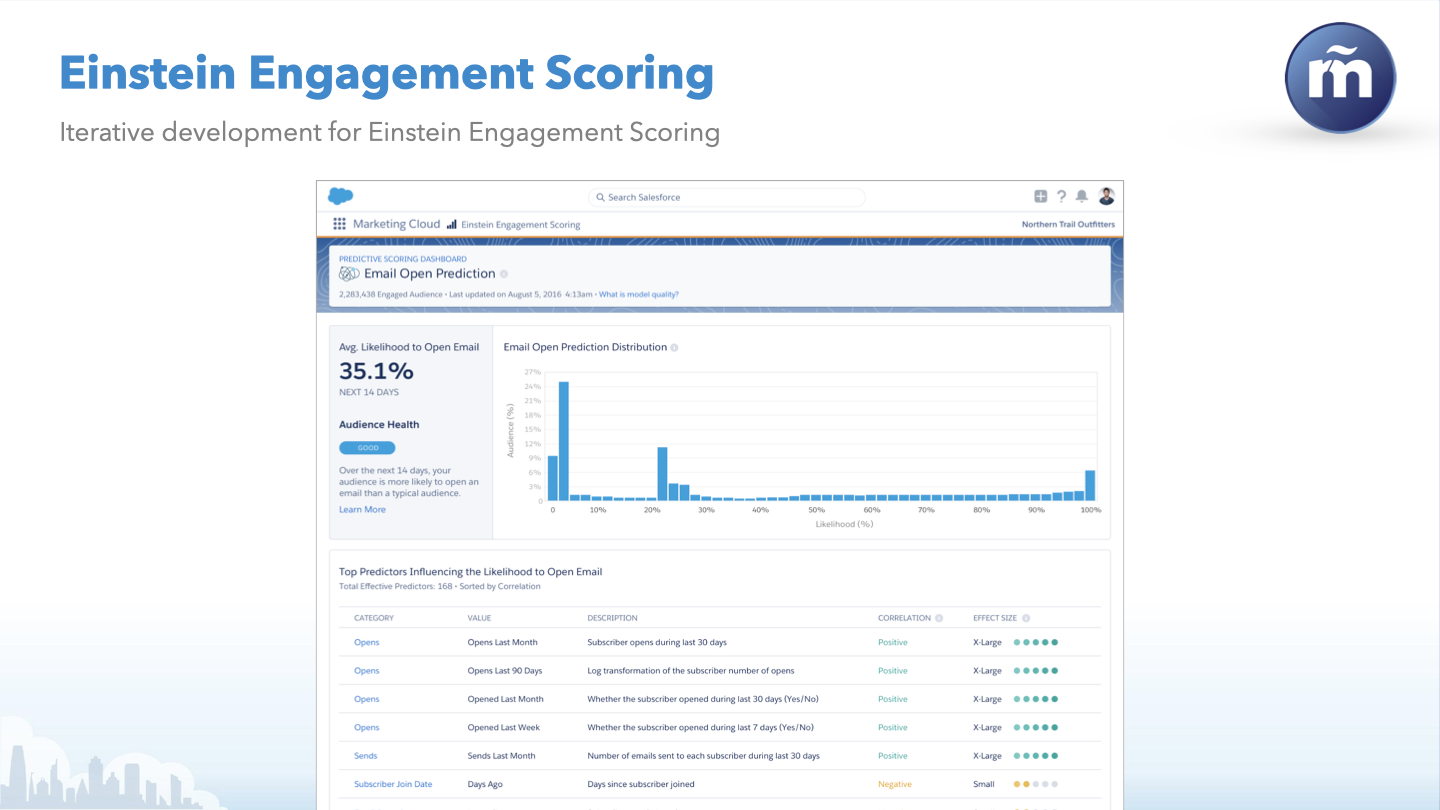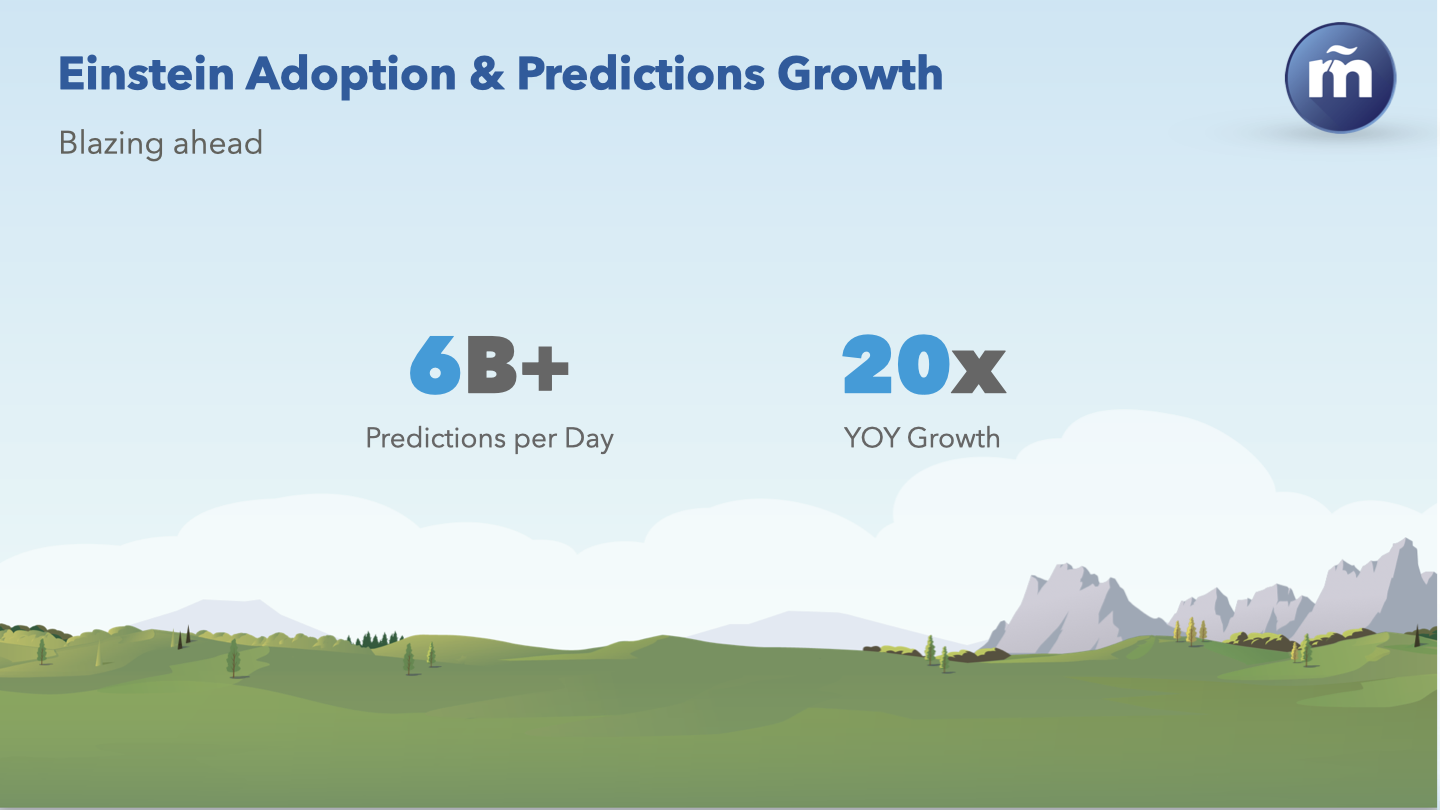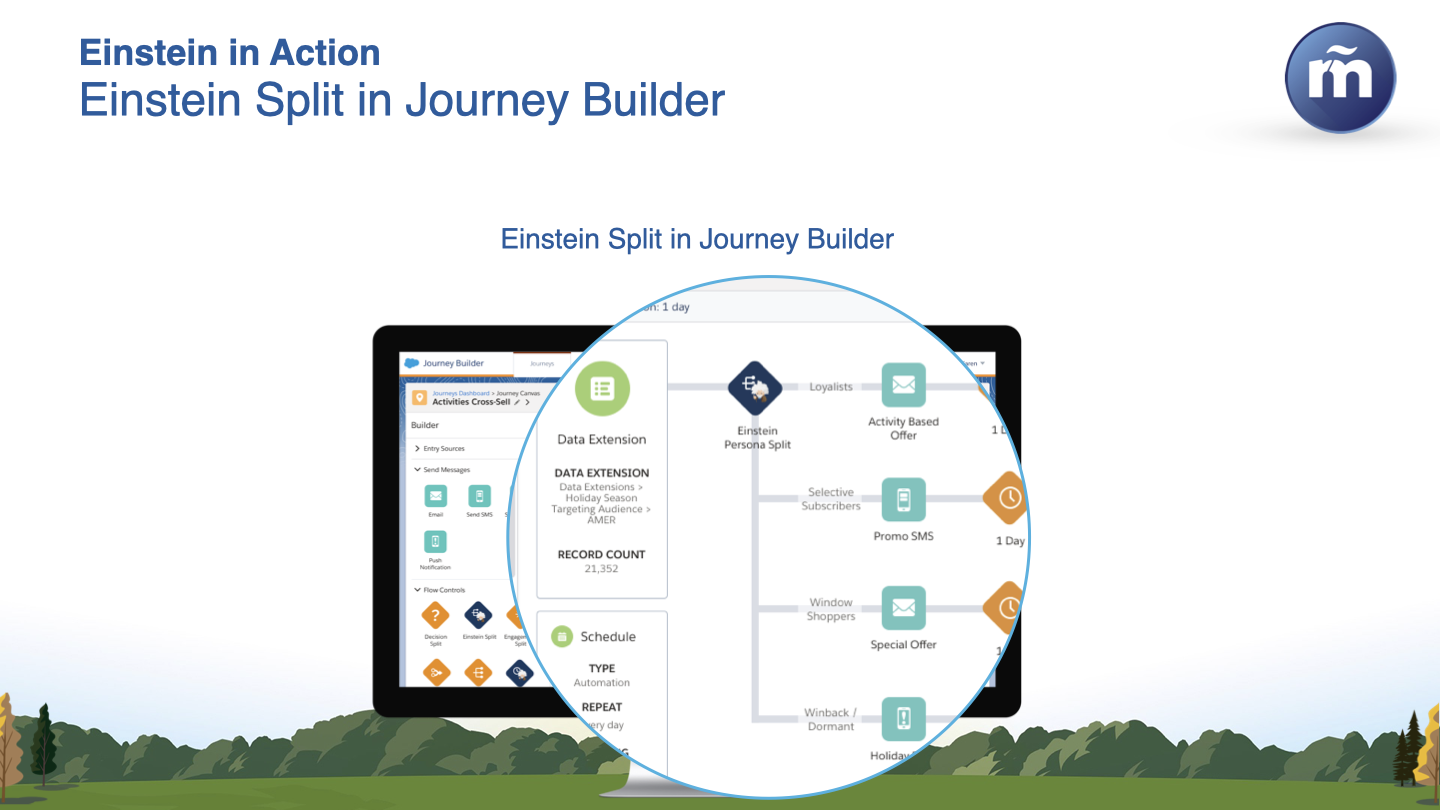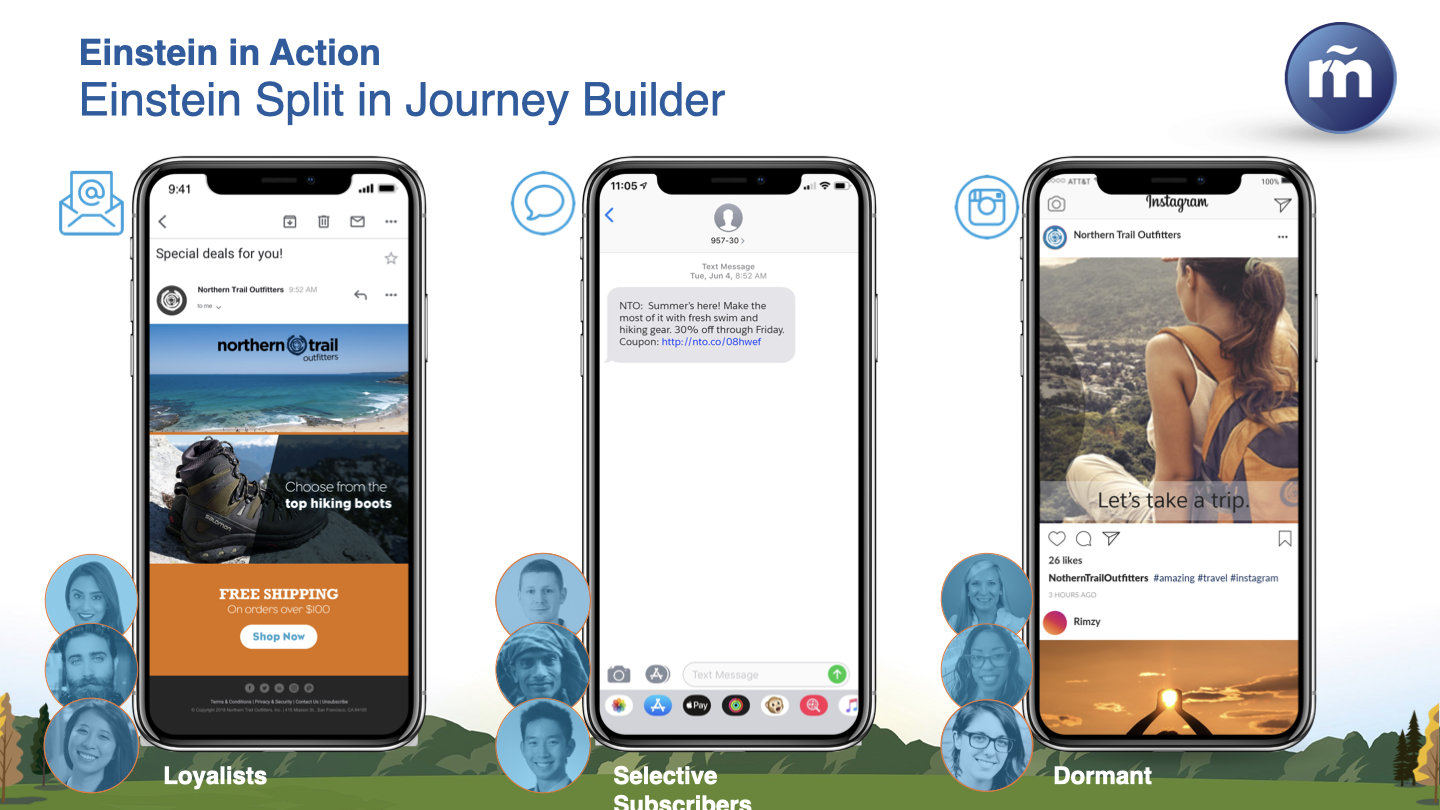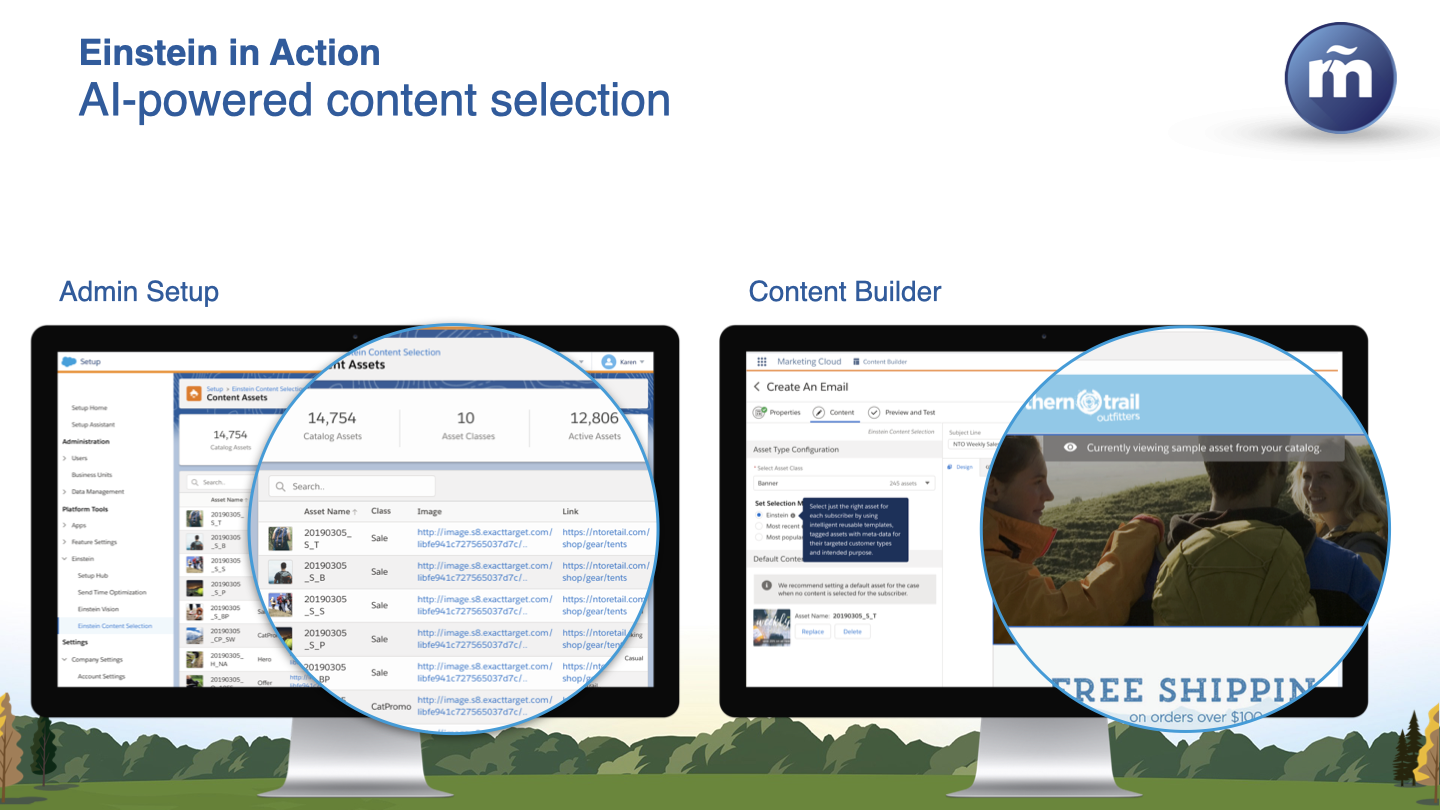Unlocking AI
for Digital Marketing
As the industry leader in digital marketing, Salesforce faced a serious challenge.
Our markeing apps were powerful and reliable, but they were also labor-intensive, requiring technical expertise to craft rules that targeted relevant customer cohorts. This legacy left us ripe for disruption by competitors with more advanced automation features. As UX leader of the Einstein product team, I spearheaded our journey to deliver next-generation tools that leveraged AI to help marketers make the leap into intelligent automation. Our mission? Build customer confidence through smartly integrated workflows, intuitive user experiences, and measurable impact.

In this case study I’ll share how we transformed market apprehension into customer enthusiasm and leveraged emerging AI capabilities in humanistic ways to empower digital marketers to drive substantial engagement and sales impact by embracing these new tools.
Pillars
Usability
Apply familiar patterns, integrate actions into existing workflows, and provide model transparency, to make AI feel approachable to skeptical users.
Validation
Deeply engage customers throughout exploration, design, and release process.
1. Setting our Course
1. Strengten AI Expertise
We began by consulting with subject matter experts – data scientists, engineers, and PMs with strong AI and Machine Learning expertise — to help UX develop our own deep and grounded knowledge of key concepts, terms, and applications.
2. Partner with Product and Engineering
We worked closely with our partners to lay out important goals, zero in on market opportunities, consider risks, track big opportunites, grasp technical limits, and map delivery timelines.
3. Advocate for Users
We understood the potential appeal of AI to improve our customers’ marketing impacts, but those users also require measurable impacts, not just eye-popping tech demos. Our use–centered approach was critical to prioritize confidence-building customer experiences for trailblazers ready to take the leap with AI.
How can UX deliver AI tools to Marketers?
2. Defining our Approach to UX for AI

AI Building Blocks
AI requires data – lots of it. Businesses often have vast amounts, but too often it is stored in ways that make it difficult to utilize. To tap it, the Einstein first must Extract, Transform, and Load that data into accessible and performant data stores. Once so prepared, our algorithms and models start applying our AI building blocks:
-
- NLP
- Propensity Scoring
- Computer Vision & Pattern Recognition,
- Anomaly & Correlation Detection
- Optimization
Through these methods, built and tested through extensive experimentation, Einstein can begin to generate insights – the golden needle in the data haystack – that deliver precious, valuable information about customers. Those insights excite marketing teams and can drive sales. Now we are ready to surface them, but doing so requires thoughtful design to deliver a great user experience.
3. Building the Einstein Experience
Our User-Centered Approach
4. Iterative Design Example
Featured Product:
Engagement Scoring
How did our iterative process look in practice? The example below exemplifies how our research-driven process drove meaningful product design changes and iterative development.
The first slide shows what Einstein Engagement Scoring looks like today … but it did not start out quite this well-sorted, functional, and intuitive to understand and use.
- Engagement Scoring is a tool to forecast the expected behaviors of your audience based on their past behaviors. A simple concept. But bringing it to life was anything but. Once the algorithm was devised we were left with the unexpectedly challenging problem How to express the calculation in a way anyone could make sense of?
- The original design was a mess. The colored quantiles in these rainbow charts represent the likelihood buckets of subscriber behavior. Deviation from the equal, 25% audience distribution indicates the marketing performance. Got it? Most people did not get it, so we added a little info popover. But even with all the text, it was still too obtuse. We also tried these hover states as a means to clarify the model. We needed to hear from customers, so to find out if it made sense to anyone, we did some user research. We thought our customers would be very excited to see this powerful and visually appealing product. And they were. At least, users found the charts visually appealing, but it quickly became clear that as marketers scratched the surface, they’d encounter problems understanding the data underlying our charts. There was no way to know if the prediction implied a good or bad trend. Critically, there was no way to take action. After we listened to our customers, we knew that to make this tool more meaningful to our users, we needed to start over.
- Together with a product designer and user researcher, we created over a dozen explorations of possible visualizations.
- What we see here is a slew of attempts to take that original data model and find a better, more meaningful visualization. Area charts, mountain charts, starbursts, histograms, waterfalls, stacked bars, benchmarks. You name it, we mocked it up.
- Initial Research Findings: It became apparent to us that despite our best efforts, we still had major issues. None of our proposed visualizations effectively communicated meaningful insights of our predictive model to our users. We realized that customers were more interested in getting a general idea of how their audience was performing, and what the trends were. Also, it was not just the visualization (or type of the chart) that our customers complained about, it was a lack of actionability as well.
- Back to the drawing board once more. We explored fundamentally different concepts, looking for less literal but more understandable ways to express the audience health. We explored patterns like rating scales, letter grades, poor-to-excellent ranges, and more. We explored each possibility extensively, using color, charts, supporting text, and simpler or more complex rating methods until we found the right mix.
- We landed on a concept we called the health rating – to provide a clear indication of how well each measure was scoring.
- Details: The big hero number gave a raw number. The trending arrow provided another number and a good sense of momentum. Most fundamentally, we converted a complex statistical model to human-comprehensible information and used the screen text to emphasize that these are predictions, not historical data. Plus, we provided access to the data behind the prediction via the ‘view details’ link. This transparency supports a key value of Einstein design – trust and transparency.
- Details behind the rating. This transparency and access is central to our Einstein Principles and while not always essential to access, gives the type of meaningful view behind the curtain that builds confidence for our users.
- Here’s the final product we built. Not only did we discover the functional and elegant health ratings, but we took the solution further.With the Email Engagement Prediction scores – we were able to provide a more sophisticated view of these insights. And moreover, we made it actionable with Einstein Splits in Journey Builder.
- Impact: As soon as we started rolling out the upgraded product, it led to numerous documented cases of positive material growth for customer campaigns.
Features Delivered

Foundations Established and Growth Generated
Ultimately, our work helped deliver more than a dozen first- and second-generation AI tools that leveraged increasingly sophisticated data models, richer data sources, more integrated workflows, and well-understood user controls to automate optimized marketing. Some of the key features and products my team built include these:
Einstein Segmentation
Optimized customer cohort identification and targeting
Eistein Journeys
Customer Journey Optimization
Einstein Vision
AI content selection and tagging
Send Time Optimization
Optimized message delivery
Language Insights
Realt-time content rating and recommendations
Subject Line Insights
Subject line scoring and recommendations
- Optimized customer cohort identification
- Intelligent segment recommendations
- Customer Journey Optimization
- AI content selection and content tagging
- Send-time Optimization
- Language insights and recommendations
- Automated & personalized email subject recommendations
Results
Over 3 years, our team built out the foundations of Einstein for Marketing that included more than 13 features. Our active customer base grew from zero to over 5000 enterprise customers who were actively using Einstein functionality. As the power and success of the products mushroomed, it became easier for customers to feel confident and even a sense of urgency to add AI-powered personalization tools to their standard operations. Our user-centric design methods helped ensure great outcomes once these technically sophisticated tools were released and laid the groundwork for years of further growth and development. Today, Salesforce Einstein is a widely trusted brand with a flourishing ecosystem, and is playing a key role in Salesforce’s current growth and market impact.
%










